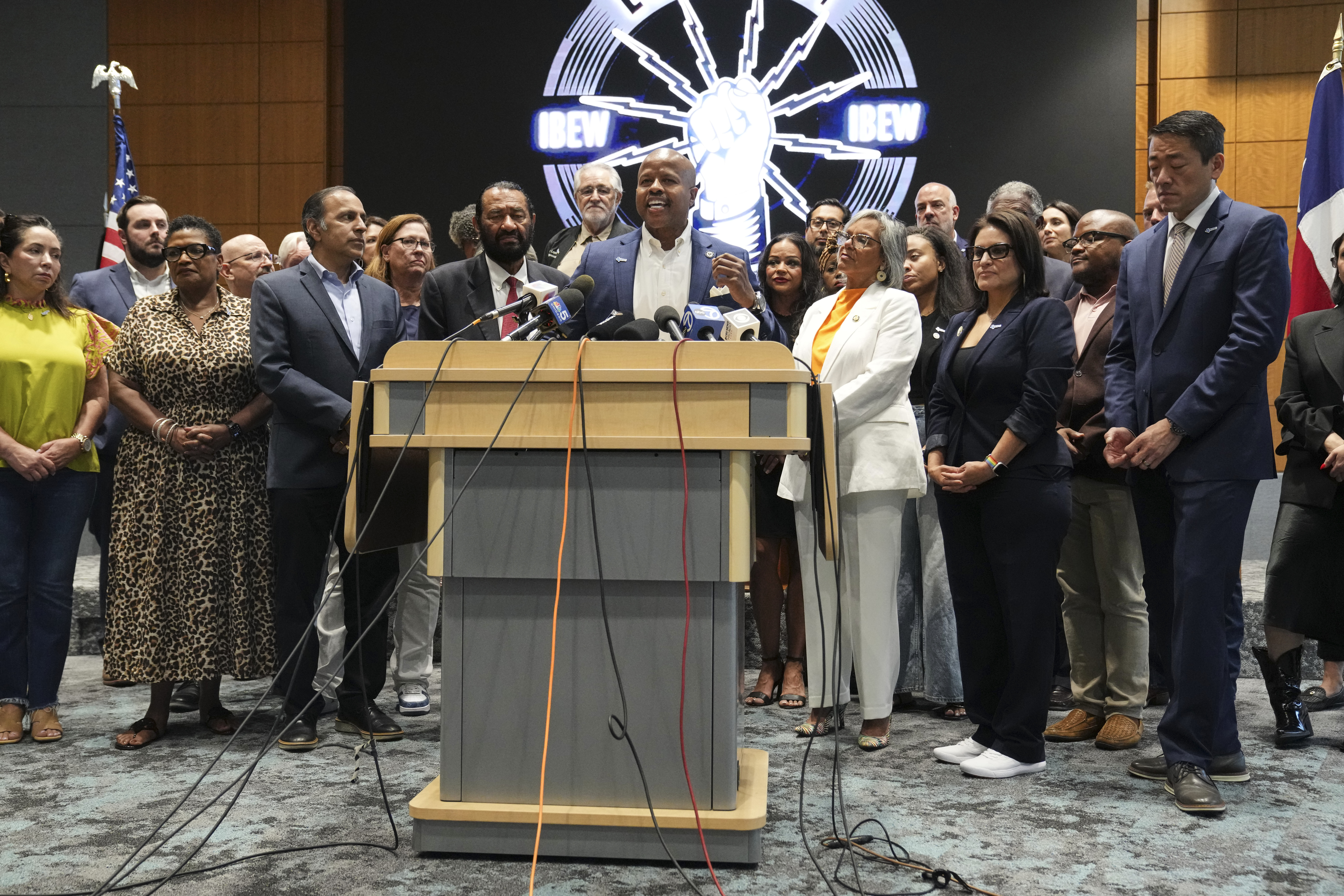Famed NASA astronaut Jim Lovell, who commanded the harrowing Apollo 13 mission that was forced to abandon a lunar landing attempt in 1970, has died. He was 97.
Lovell died on August 7 in Lake Forest, Illinois, according to a NASA news release. The cause of death was not immediately clear.
Lovell’s family requested privacy but said it was “saddened to announce the passing of our beloved father, USN Captain James A. ‘Jim’ Lovell, a Navy pilot and officer, astronaut, leader, and space explorer,” in a statement.
“We are enormously proud of his amazing life and career accomplishments, highlighted by his legendary leadership in pioneering human space flight,” the family noted in its statement. “But, to all of us, he was Dad, Granddad, and the Leader of our family. Most importantly, he was our Hero. We will miss his unshakeable optimism, his sense of humor, and the way he made each of us feel we could do the impossible. He was truly one of a kind.”
Lovell was already well-known among NASA astronauts, having flown to space on the Gemini 7, Gemini 12 and Apollo 8 missions, before he was selected to command Apollo 13, which would have marked the third successful crewed moon landing for NASA.
Astronaut James A. Lovell is seen in November 1966 inside his Gemini spacecraft during the Gemini-12 mission. Astronaut Edwin Aldrin is seen in the left background. - NASA
But during the ill-fated mission — which carried Lovell as well as astronauts John Swigert Jr. and Fred Haise Jr. on board— an oxygen tank located on the crew’s service module exploded when they were about 200,000 miles (322,000 kilometers) away from Earth.
Lovell delivered the news to mission control, saying “Houston, we’ve had a problem.”
With the damage effectively taking out the crew’s power source and other life support supplies, the Apollo 13 crew had to abruptly abandon their trek to the lunar surface and use several engine burns to swing around the far side of the moon and put themselves on a course back toward Earth.
The three-person crew made a high-stakes splashdown return in the South Pacific Ocean about three days after the tank explosion, marking the conclusion of what has come to be known as the “successful failure” of the Apollo missions.
The ordeal was fictionalized in Ron Howard’s 1995 film “Apollo 13.”
Lovell never made it to the lunar surface.
“Twice a bridesmaid, never a bride,” Lovell said with a laugh when speaking to CNN in 2008 for the 40th anniversary of Apollo 8, admitting that for years he harbored resentment his last mission had been a “failure.”
It was only later on that Lovell said he fully realized what a success Apollo 13 had been, with the safe return of the crew to Earth.
“It is mind-boggling in some respects,” Lovell told CNN.
The Apollo 13 spacecraft lifts off atop a Saturn V rocket. - Bettmann Archive/Getty Images
In a statement released Friday, acting NASA Administrator Sean Duffy credited Lovell’s “calm strength under pressure (that) helped return the crew safely to Earth and demonstrated the quick thinking and innovation that informed future NASA missions.”
Lovell was the first astronaut to make four spaceflights, totaling more than 715 hours in space. He was part of NASA’s second-ever astronaut class, selected in September 1962 and nicknamed the “New Nine.” And joining the Apollo 13 crew after having first served on Apollo 8, which intentionally circumnavigated the moon but did not land on its surface, made Lovell the first human ever to see the moon up close for a second time.
In an interview with CNN in 2018 at age 90, Lovell recalled his adventure as Apollo 8’s navigator. “To me, it was a mini Lewis and Clark expedition,” Lovell said. “We were going someplace new to observe the far side of the moon, which had never been seen before.”
At one point Lovell extended his arm toward the window of the spaceship. Earth was so small that he could cover it with his thumb.
“I realized that behind my thumb, there were about (3.5 billion) people and everything I ever knew,” Lovell said in the 2018 interview. “I suddenly got a different feeling about life in general and my position in it.”
William Anders' famous photo, 'Earthrise.' - NASA
During the Apollo 8 mission, Lovell’s crewmate William Anders captured the iconic “Earthrise” image of our home planet emerging from beyond the lunar horizon. Captured on Christmas Eve in 1968, the image has captured the imagination of generations of astronauts and has been credited with helping to spur environmental movements.
Anders, Lovell and Borman were recognized by Time Magazine as “Men of the Year” in 1968 for their work on the Apollo 8 mission.
This is a developing story and will be updated.
Sign up for CNN’s Wonder Theory science newsletter. Explore the universe with news on fascinating discoveries, scientific advancements and more.
For more CNN news and newsletters create an account at CNN.com

 German (DE)
German (DE)  English (US)
English (US)  Spanish (ES)
Spanish (ES)  French (FR)
French (FR)  Hindi (IN)
Hindi (IN)  Italian (IT)
Italian (IT)  Russian (RU)
Russian (RU)  17 hours ago
17 hours ago


























Comments